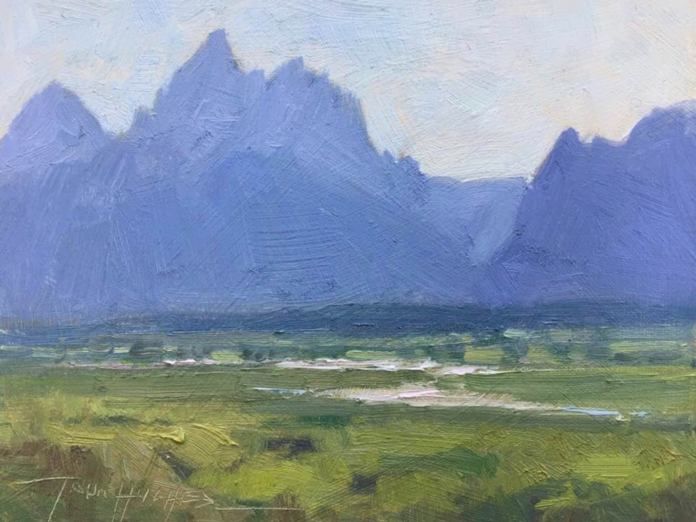Thoughts on what you should practice while plein air painting ~ a new guest blog post by John Hughes
One of the most effective things I’ve done in my classes over the years is to analyze tasks and then break them down into smaller bite-sized units, in order to make them more easily understood. I’m sure this approach was the result of my many years of working with intellectually challenged individuals, but it has also served me well when attempting to understand life, music, and art.
As I pondered this important topic, I came away with three very distinct skills to share with my painting class, along with others. Let’s dive in and see how these three things can help artists and aspiring artists cut through the maze of information on the topic of plein air painting.
Important Skills for Plein Air Painting
Skill #1 – The Ability to Observe
What do we observe while plein air painting?
- Relationships within the light and shadow areas of our chosen scene.
- What the natural design possibilities of the location have to offer.
This may sound like an easy job, but true observation entails dedicated concentration which is often not as easy to achieve due to the many distractions which vie for our attention daily. These may include the details of the location itself, people and vehicles passing by, animals, and interruptions in the form of cellphone calls and text messages. In truth, we need to train ourselves to overcome the shiny lures of life, which will surely get in the way of real observation and prevent us from achieving more successful paintings.
When we are making our observations it is important to have a clear set of things to key in on. For example, if we are observing the scene for an understanding of the light and shadow areas, the things we need to look for are relationships of – colors, values, edges and textures within these two.
If we are observing the scene for design possibilities, we look for existing relationships of line, linear movements, color and value harmony, edge harmony, and textural relationships within the whole encompassing scene.
It’s important to note here, that the kind of observations I’m writing about are best made on location, out in nature! These observations will always be more truthful than secondary visual information which is derived from photo reference.
Another important note is that observation holds the key to answering most of our questions about any relationships in nature. Often students will ask me what a certain rule is – such as the one about “warm lights and cool shadows on a sunny day.” While it’s tempting to make generalizations about observable facts, nature can always throw you curve balls. For this reason, my best answer is usually- “What are you seeing?”
Skill #2 – The Ability to Create
Typically landscape painters are not going to get overly creative with the light unless there is a specific reason to do so, but we do get very creative when it involves composition and design.
As discussed previously, our first job when designing our landscape is to look for existing design possibilities on-site and then use our innate creativity to embellish what is already there.
It certainly takes exhaustive practice to develop one’s design sensibilities, which can be the result of both natural talent and a learned skill.
My advice to anyone wanting to develop their design sense further is to study, study, and study some more! As a matter of fact, designing is a constant battle, but the good news is that winning this battle on any canvas you paint is the definition of artistic joy. Some you win and some you may lose, but the struggle is always worth it artistically; especially when you win!
Skill #3 – The Ability to Execute
Understanding your job as an artist is one thing, but the ability to execute your canvas is another. Here is where much study in the form of reading, attending classes and workshops, watching videos, and participating in plein air conventions really pays off. Anyone who wants to succeed at painting must be willing to spend time and money in pursuit of their art education.
Yes, logging brush miles – doing, doing and more doing – is essential to becoming artistically successful, but don’t overlook finding good teachers who can help you over some significant bumps in the road. True artists are lifelong students and learners, so never stop! That’s one of the reasons I teach: we learn from each other and there is no end to it. So go out and find opportunities to grow, even if it takes a lifetime.
Until next time,
John
***
Plein Air Painting in the Smokies
Join PleinAir Magazine in the Smokies for the 11th Annual Plein Air Convention & Expo! May 20-24, 2024 we’ll have five stages with over 80 instructors, and will be painting throughout The Great Smoky Mountains, including the Biltmore Estate.
And browse more free articles here at OutdoorPainter.com




